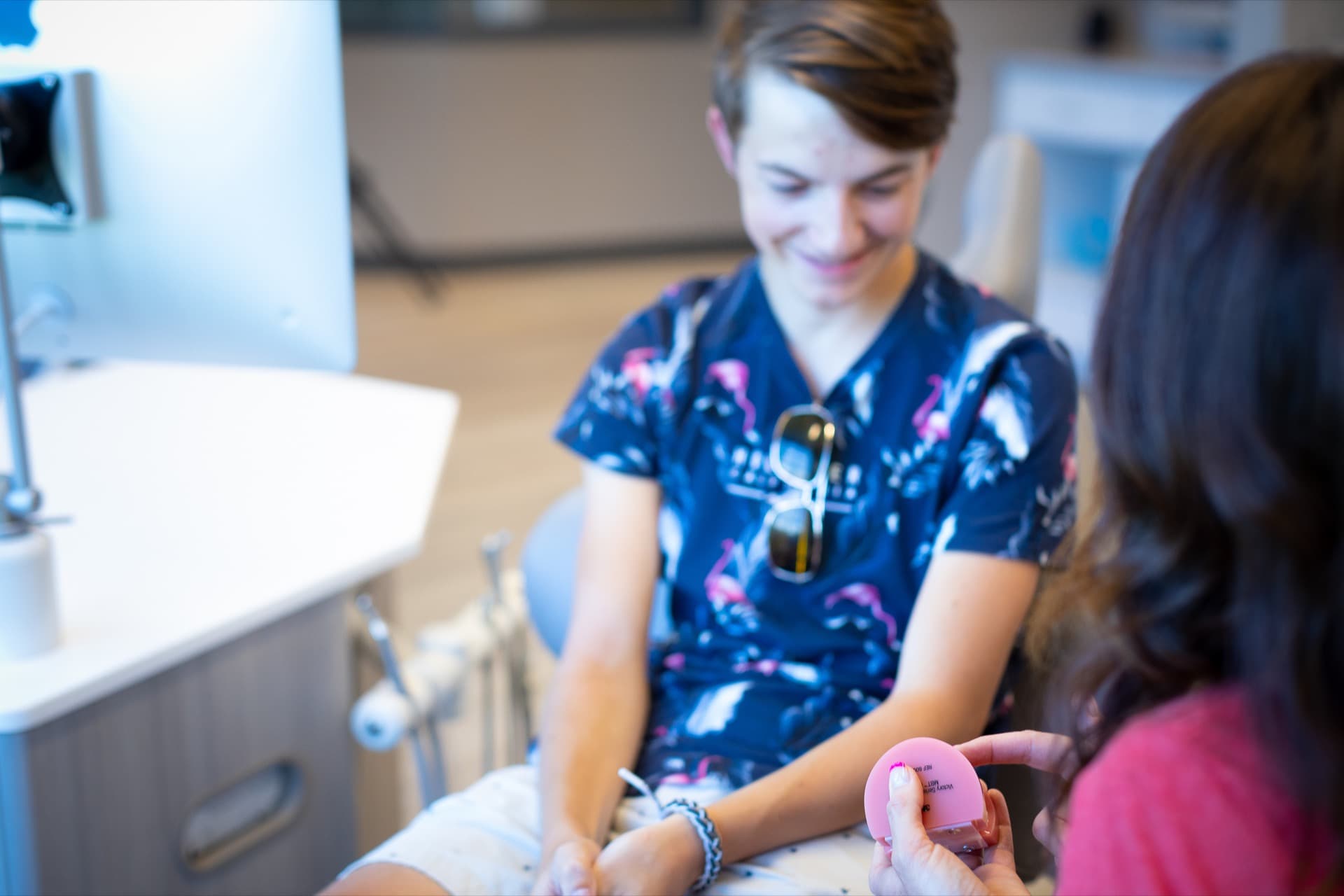How Early Orthodontic Treatment Can Help Your Child Later
Does your child have teeth that need braces? At what age can you get braces? The answer may be obvious in some cases.
You may notice your child’s teeth are coming in crooked, or they may appear to have an overbite. Some cases, though, aren’t as obvious.
When should your child see an orthodontist? The American Association of Orthodontists recommends that children consult with an orthodontist as early as age 7. It allows them to evaluate your child’s developing mouth and see whether your child will need orthodontic treatment.
Did you know braces treatment can happen in two phases? Two-phase treatment often makes it easier on the child and easier on your wallet because it staves off more intense (and expensive) treatment later. Hentscher-Johnson Orthodontics can treat your child with two-phase treatment if they need treatment at all.
How Old Do You Have To Be To Get Braces?
It’s best for children to get braces around 11 years because most permanent teeth are in, and the baby teeth are gone. So why should your child see an orthodontist by age 7? Preventative care early can make orthodontic treatment faster, better, and less expensive later.
Your child starts getting the first tooth around six months of age. By age 6, many of those primary teeth are falling out and being replaced by permanent teeth. By then, an orthodontist can tell if your child has misaligned teeth and other orthodontic problems.
An orthodontist can see whether your child will have straight teeth and a good bite early. Crooked baby teeth don’t necessarily mean the adult teeth will be crooked. However, overcrowded teeth are often the result of a small jaw or small curve of the jaw known as the dental arch.
Your orthodontist will do x-rays and digital scans of your child’s teeth and jaws to see whether their permanent teeth are forming correctly and are set properly to erupt when the baby teeth fall out.
Checking your child’s teeth with an early orthodontic appointment sets them up for two-phase treatment.
What Is Two-Phase Braces Treatment?
Children usually begin two-phase braces treatment around 8-9 years old. The first phase is dedicated to correcting your child’s jaw growth and straightening their bite, which is how the upper teeth line up with the lower teeth. The second phase involves treatment with braces, clear braces, Invisalign, or 3M Clarity clear aligners.
Phase I Braces Treatment
Phase One braces treatment is a prelude to braces treatment. We use this phase to prepare your child’s mouth for braces by fixing what may be the causes of their bad bite.
Phase 1 orthodontics may involve using a palate expander to widen the jaw and allow permanent teeth to come in straight.
Your child may get a tongue crib to keep them from thrusting their tongue against their teeth, or they may get a similar device to stop them from thumbsucking.
We may also put spacers between the teeth to separate them and prepare them for bands that will fit around the teeth for braces.
These devices will help your child’s teeth and jaws develop properly.
Phase II Braces Treatment
Phase Two braces treatment happens a couple of years after Phase I braces if necessary. In a few cases, Phase I treatment options can improve the child’s bite enough that braces won’t be needed. For the rest, braces or clear aligners treatment usually begins at about age 11.
The corrections made in the first phase usually mean the second phase is shorter and less complicated than it would be without phase one. That’s because the first phase of treatment helps prevent more serious dental issues from developing.
How Do You Know If Your Child Needs Braces?
How do you know if your child needs braces? A child orthodontist can tell you. Dr. Hentscher-Johnson will examine your child and let you know if your child may need braces. She can also tell you whether your child will need two-phase braces or if regular braces will be enough.
Here are some signs your child needs braces:
- Early or late loss of baby teeth
- Problems chewing or biting
- Mouth breathing
- Thumbsucking or pacifier use beyond age 2
- Speech problems
- Protruding teeth or underbite
- Teeth don’t come together
- Jaw shifting when the child opens or closes his mouth
- Crowded teeth
A lack of all or any of these symptoms doesn’t mean your child won’t need braces later. That’s why it’s so important to consult with an orthodontist by age 7. The earlier dental issues are addressed, the easier they are to fix. It’s harder to fix dental issues as an adult because the jaw has stopped developing.
Child Orthodontics in Columbia, IL
Now that you know when kids should get braces, the next step is to find the right orthodontist. Hentscher-Johnson Orthodontics provides braces for kids in Columbia, IL, and Waterloo, IL. If your child is ready for their first orthodontic consultation, you can start a virtual consultation or schedule an appointment.













